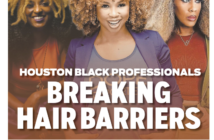For the first time ever, the advocacy organization 4A’s Foundation is hosting a gala to commemorate the inception of the Multicultural Advertising Intern Program (MAIP). Founded 50 years ago, MAIP is the largest and longest-running national diversity talent pipeline in the media and advertising industry to date. “This Golden Gala is the next step in our journey as we invite all who benefit from the impact of MAIP to celebrate together as one big community. The funds raised will help us continue our mission for the next 50 years, and we hope everyone will join us. It’s an investment in our collective future,” shared a spokesperson from the 4A’s Foundation.
The 4A’s Foundation’s Senior Vice President Tangie Murray and award-winning journalist and gala host Soledad O’Brien spoke with EBONY about the 4A’s Foundation inaugural gala and five decades of impact within the advertising industry.
Over the course of your respective careers, how have opportunities similar to the MAIP program been helpful in your advancement?
Tangie Murray: I actually started my career in advertising and at the time, I was at a predominantly white institution. I did not know about the MAIP program but I wanted to go into advertising. So seeing the difference between what I was able to sort of carve out on my own by building community and asking the right questions, like trying to, you know, get in front of people that I thought could pour into me and help further my career, you know, seeing the difference between what I went through, you know, 20 plus years ago, and the opportunities that the MAIP constituents and program participants are provided with, is night and day. So it’s really great. It’s such an impactful program. I wish I had known about this when I was their age.
It’s not just exposure and access that’s provided. It’s making sure that they can not only, you know, enter, but succeed and even thrive in these environments. And that’s where the 40 Foundation and the Meet program make a key difference in their success.
Soledad O’Brien: I wish we had something like that as well. I did an internship and that’s probably the closest thing to the level of access and exposure the MAIP program provides. To me, exposure is really the only way to close the gap, especially for students who traditionally haven’t had parents or relatives in an industry and honestly, most industries, right. We have a very small percentage of African-American advertising executives. There are so many things you learn from having a mom or a dad or an uncle who’s been in the industry and can help you kind of navigate those things that are coming down the pike that you don’t even realize they’re coming at you. I really think it’s critical to have exposed. Without it, you have a lot of students who don’t have the opportunity to get to the next level. Getting college students hired into jobs is really important but really, I think exposure to help them think about the next step or the next opportunity is also really essential.
In 2023—in light of Supreme Court decisions on affirmative action and growing political dissent over diversity— what is the benefit of having diverse talent pipelines in advertising and beyond?
O’Brien: I think there’s no question that executives in companies across the country and across the world fully recognize that diversity is a value for them. Back in the day, when I started working in 1987, diversity was very much a combined job but now, I think executives fully understand that if you want to be successful, you actually have to make sure that you are doing business in all corners. The idea that you can ignore a portion of the population is very old school and it really doesn’t happen anymore. There are various studies that talk about the measurable value of diversity. Diverse teams are more successful and make more money in certain industries; there’s a tremendous value.
What are key learnings that you’ve come to value in reflecting on MAIP’s 50 years of impact?
Murray: It’s really remarkable that community has been fostered and built over the past years. The first cohort to meet was in 1973 with about 15 young Black interns who were venturing out into the big world of advertising. Now, we have cohorts of up to 260 students per year. Some of the members from the earliest years of MAIP are still actively involved; there’s an active alumni association with 4,300 or more professionals who participate in that. It’s the largest diverse community in the industry. So when I talk about that history and that legacy, that’s what excites me the most about what MAIP has done and what it continues to mean to this present day.
Tangie, what were the criteria for selecting honorees for this year’s first-ever gala? Soledad, what solidified your alignment with the organization as host this year?
Murray: As the first-ever gala for a foundation—if we were ever going to have one—it makes all the sense in the world to have it to celebrate the 50th anniversary. As we celebrate the rich history and legacy of MAIP, we’re honoring five members from each of the past five decades. It comes down to the fact that over the past 50 years, we’ve invested in diverse talent and services in the advertising, marketing and media industries. We’re honoring luminaries from these different industries whose work and careers really embody the mission of the foundation. We’ve gone out to find champions of equity, inclusion, belonging, and diversity in adjacent industries and shine a spotlight on them through the gala. We want to expand our community of supporters to invite them to invest so that we can show up for the next 50 years of programming.
O’Brien: I am the host of the inaugural year, which is pretty cool. I fully support any organization that supports, educates and very tangibly works with young people to help them be successful. I don’t think we are in a position today to just give them good wishes and hope for the best. We have to literally help them strategize, get jobs and navigate challenges both tangibly and tactically. How do you not love an organization that can help students find an advocate?



